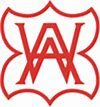Health and wellbeing includes experiences and outcomes for personal and social development, understanding of health, physical education and physical activity, and contributions from home economics.
It also includes approaches and activities such as physical activity and nutrition, planned by pre-school settings, schools or colleges to promote the health and wellbeing of their learners and the wider community.
Children and young people need to experience what it feels like to develop, enjoy and live a healthy lifestyle.
They also need to learn ways of dealing with the many new and challenging situations they will experience throughout their lives.
A healthy lifestyle supports physical, social and emotional wellbeing, and underpins successful learning.
Concerns about the health, diet and activity levels of Scotland’s children and young people, social inclusion and inequalities in health emphasise the importance of a focus on health and wellbeing throughout education, starting in the early years.
Learning through health and wellbeing enables children and young people to:
- experience positive aspects of healthy living and activity for themselves
- develop the knowledge and understanding, skills, abilities and attitudes necessary for their physical, emotional and social wellbeing now and in their future lives
- make informed decisions in order to improve their physical, emotional and social wellbeing
- apply their physical, emotional and social skills to pursue a healthy lifestyle
- make a successful move to the next stage of education or work
- for some, open up opportunities to excel in sport or to pursue careers in health and leisure industries.
P.E
Updated : August 2020
Indoor PE sessions have been postponed until further notice this session. The children should come dressed appropriately in red poloshirt and joggers/ shorts or leggings for outdoor learning experiences. A waterproof jacket is also required as children will participate in outdoor activities in a variety of weathers.
It is important that pupils come prepared to learn and for P.E this requires appropriate clothing. All jewellery should be removed.
Pupils who are not participating in P.E must have a note or a medical certificate.
There are forms of dress that are unacceptable in school, such as items of clothing which:
· Potentially encourage factions (such as football colours)
· Could cause health and safety difficulties such as jewellery.
All jewellery should be removed for P.E including earrings. Where earrings cannot be removed, parents should provide elastoplasts or micropore tape to cover earrings during lessons. The school cannot provide this or be responsible for the removal of, or safeguarding of pupils’ jewellery during the P.E lesson.
Vest tops with thin straps and crop tops are not practical for P.E lessons.
Therefore acceptable P.E kit should comprise of:
· t-shirt
· shorts/ jogging bottoms or leggings (the latter is more practical for outdoor lessons)
· gym shoes/trainers
Each class receives two sessions of P.E per week. Class teachers issue a letter for each Bay with days at the beginning of term 1.
Primary 5 pupils have Swimming and Dry Sports on to be confirmed at Wishaw Sports Centre. Please remember swimming clothes, P.E kit.
In

